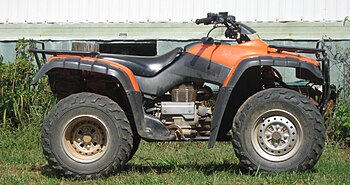Safety and convenience – these two factors are the major reasons behind every family’s choice on having a wireless burglar alarm system in their home. Compared to the standard burglar alarm system which is connected using different wires, the wireless alarm utilizes radio waves. Having so, this lessens the many scattered and displayed wires inside your home.
 |
Picture of a burglar alarm detection point. (Photo credit: Wikipedia)
|
More convenience, as well as savings, is brought by the wireless alarm since you do not need to hire an electrician, also, the equipment can easily be attached on a wall area of your choice as long as you properly adhere to the manual guide included in every package.
It will be handier that upon installation of your wireless burglar alarm system, you have an adept knowledge of the equipment’s composition.
Humans have a brain. The brain is considered the control center of the entire body. When some of the humanity’s geniuses invented equipment, they formulated brains for it. The control panel is the brain of a wireless burglar alarm system. Just like human’s brain which sends messages to and receives stimulation from all parts of the body. The control panel is responsible for disseminating signals to the system’s sensors which then creates an “alarm” sound.
The keypad serves as the heart of your wireless burglar alarm system wherein it is responsible for letting your system function or destabilize. The remote keys are alternative to keypads. Remote keys are normally used in long distance for the system to effectively function.
Other parts of the wireless burglar alarm system which you should get familiar with are the magnetic contacts, contact sensors, cameras and monitoring devices.
The magnetic contact is a switch which determines the space between the switch and the magnet. Whenever the space between the switch and the magnet goes beyond its normal measurement and the system has been turned on, an alarm sound is evident. Space heightens when individual attempts to open a door or a window.
Some wireless burglar alarm system has built-in contact sensors. Motions or excessive heat is being detected by this type of sensors. Contact sensors are commonly used where there are fewer chances for individuals to be present in a certain area in the home or in an establishment. Another supplementary device in the system is the “monitoring service” which detects signals from the control panel. When a burglar enters your home and the system has detected it, an alarm will then manifest. The monitoring service will be the one responsible for calling emergency institutions such as 911, a police station or even the hospital. Thus you are guaranteed that during urgent situations immediate help will come its way.
Cameras can also be available with this type of alarm system for additional surveillance which may lead to greater protection. The transmission of video information from the cameras will go through a wireless signal which will identify people coming in and out of your place. Thus you will have an easier time to distinguish who your visitors are the culprits.
There should be no second thoughts when safety is the subject matter. You cannot sacrifice your own as well as your family’s protection over anything else. With sufficient knowledge about the security equipment you have at home, such as the wireless burglar alarm system, you are providing utmost protection that you and your family deserve.





